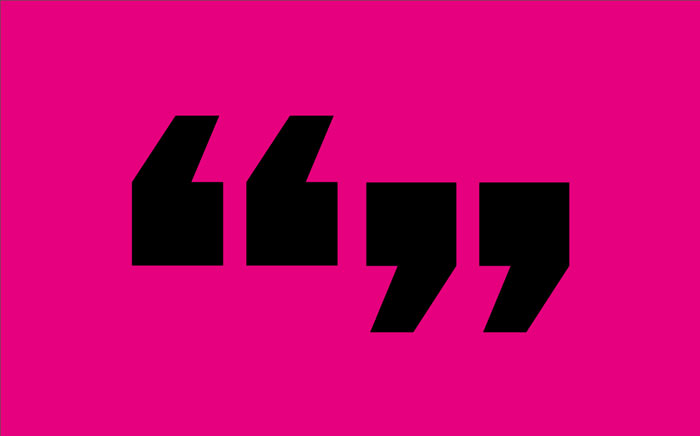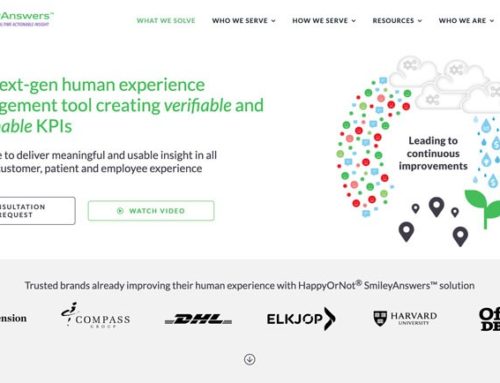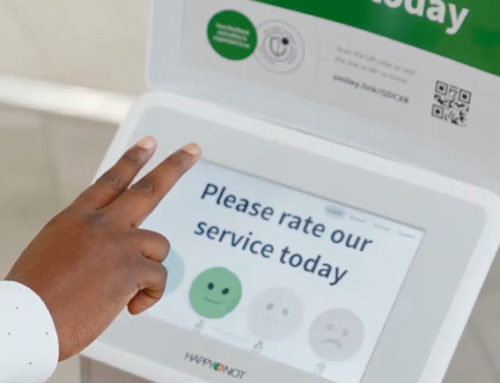In last week’s blog post, we had 289 positive words to help you design a positive experience. This will be part two of a three-part series to help you build great experiences. In this week’s post, we will get into the touchpoints along an experience that impact how individuals feel about the experiences you bring them. We will first get into the definition of a touchpoint. Then, we will share the difference between a physical and a digital touchpoint. Lastly, we share a list of touchpoints that you can bring to a meeting to discuss and focus on as you look to improve human experiences.
Touchpoints and the Human Brain
Neuroscientist Lisa Feldman Barrett, a leading researcher into human emotion, describes the human brain as being trapped in a dark box. The only information it receives from the outside world comes from the senses: Sight (light), Sound (Air pressure), Taste, Smell, and Touch. Each input to one of these senses does not mean anything. The brain has to interpret and make meaning of each input. It does this by comparing the input to past inputs to make a prediction about the current one.
We will define “touchpoints” as these inputs to any one of the five senses that a person has with your organization. Because there are so many inputs to a person’s experience and because each organization is different, the amount of inputs (touchpoints) can be quite large. As such, there will be no inclusive list of them to this post. We will provide a list that will help you at a meeting discuss this topic and discuss which inputs/touchpoints are the most important for your organization or department. As you review your most important touchpoints, reflect on how people approach or avoid your organization at touchpoints along their journey.
Ideas to break down touchpoints
As mentioned, the number of touchpoints a person has with your organization is tremendously large. As a person goes through your organization either as a customer or an employee, they are not consciously aware of most of these touchpoints. As we have discussed in a previous post, the human brain is constantly maximizing energy and that we as individuals cannot be aware of every input to our brain. To give you an example, you can converse with someone about an experience and they can say it was negative. Probing further into why a person feels that way and they may have not have an answer for the question. We as individuals are constantly approaching or avoiding ideas, products, services, people and other inputs.
You can break down inputs/touchpoints in a few ways. The first is to separate touchpoints in both physical form versus digital form. A second way is to break it down based in journey form. Descriptions of each are listed below:
- Physical Touchpoints are tangible in an experience. Examples of Physical Touchpoints can include physical signs, brochures, store layout, restrooms, etc.
- Digital Touchpoints consist of the inputs that are in digital form. Examples of Digital Touchpoints include websites, social media, online search, blog posts, emails, etc.
Another way you can break touchpoints down is by doing it along a person’s journey with your organization. A customer journey can be broken down into these categories:
- Awareness – The touchpoints that bring awareness of your organization
- Consideration – For customers, the touchpoints that help determine if to purchase
- Purchase – The touchpoints in the purchasing process
- Service – The touchpoints in providing service to the customer
- Loyalty – The touchpoints that the customer experiences to stay as a future customer
There can be other ways of categorization. As an example, you can establish important touchpoints based on inputs to the five senses. The key is to name the important touchpoints that have the biggest impact on your organization.
Touchpoints
Below you will find a large list of touchpoints in alphabetical order to get your organization focused on which touchpoints are the most important. Since each business is different, your touchpoints will vary from other organizations. Exploring that uniqueness can be another way to find solid touchpoints to improve your brand and separate yourself from others.
List of Touchpoints to Review:
Advertisements
Appearance – Store/Employees/Products
Appointments – Availability
Apps
Availability of Products
Banner Ads
Billboards
Billing and Invoice
Blog
Brochures
Business Cards
Business Hours
Call Center
Case Studies
Catalog
Chamber of Commerce
Chat Bots
Chat Conversations
Check-in
Check-out
Cleanliness
Colors
Commercials
Community Activities
Conferences
Content
Conventions
Coupons
Customization
Delivery
Demos
Digital Ads
Discounts
Direct Mail
Displays
eBooks
Email
Employee Availability
Employee Conversations
Employee Interactions
Employee Knowledge
Expectations
Events
First Impressions
Flyers
Handshake
Infographics
Instructions
In Store Navigation
Kiosks
Landing Page
Last Impressions
Lighting
Live Chat
Local Ads
Locations
Login
Logo
Loyalty Program
Mailings
Mascots
Mobile App
Mobile Payment
Music
Newsletter
Noises
Nonverbal cues
Omnichannel
Onboarding
On hold Music
Options
Ordering
Owner’s Manual
Packinging
Parking
Peer Observation
Personalization
Podcast
Pop ups
Postcards
Posters
Presentations
Press Kits
Press Releases
Price Comparisons
Prices
Product Engagement
Product Images Online
Promotional Products
Promotions
Quality of Service
Quality of Products
Radio
Receipt
Referrals
Refunds
Register process
Renewals
Restroom Cleanliness
Restrooms
Reviews
Rewards Program
Safety Policies
Safety Precautions
Sales person
Samples
Search – SEO
Self-Service
Seminars
Service Recovery
Shopping Cart
Show Rooms
Signage
Smells
Social Distancing
Social Media
Social Proof
Speaking Engagements
Speed of service
Sponsorship
Store Fronts
Store Layout
Support
Surveys
Tastes
Temperature
Testimonials
Testing Products
Text Messages
Trade shows
Transaction Process
Trials
TV
Usefulness – Product/Service/Employees
Valet
Videos
Virtual Showrooms
Voice
Voicemails
You Tube
Waiting Time
Wearables
Webinar
Website Appearance
Website Navigation
Website Speed
White Papers
Word of Mouth
The above is a starter list to get you thinking of the various inputs that people have towards your organization. These inputs form approach or avoid behaviors in the people you serve. In the last post, we discussed 289 positive words to help you design positive experiences. The next step is to bring those positive words together with the touchpoints to understand what is needed to bring these great experiences.
Bringing Positive Words to the Touchpoints
To give an example on bringing positive words to the touchpoints, let us look at a small café. The owner of the café has a few positive words that they want to make sure is a part of their customers experiences. The top five positive words that the owner wants is the following:
- Welcoming
- Warm
- Fresh
- Reliable
- Loyalty
After communicating and training employees on the objectives, the owner of the café now wants to pick out the most important touchpoints that matter to their business. The following touchpoints are what the owner feels are the most important inputs the customers have about the café. These touchpoints include:
- First Impression
- Employee Interactions
- Menu
- Product taste
- Consistency of Service
- Loyalty Program
- Café Atmosphere
- Café Restrooms
- How are customers welcomed the instant they walk in and through the whole experience?
- Are employees constantly obtaining the needs with friendly conversations?
- Does the menu look welcoming and unique?
- Is the service consistent along with product taste to give the customer a sense of welcoming certainty?
- Does the loyalty program make the customer feel a part of a welcoming community?
- Is the atmosphere and café design welcoming to customers?
Wrapping it Up
In the first part of this three-part series, we discussed proactively using words to design great experiences. In this week’s post, we went over the definition of a touchpoint. Touchpoints can be digital or physical. Some ways to organize your businesses touchpoints can be to separate digital/physical, map them along a customer journey, or use the five senses to analyze how people interpret the inputs you bring. There are several ways that you can analyze them.
We also shared a list of starting customer touchpoints to help you brainstorm and perspective take on the various inputs people have interacting with your organization. Each organization is different so the touchpoints between two businesses can be quite large. By deciding which touchpoints are the most important ones where people make decisions on approaching or avoiding your organization, you can put your energy to where it is most needed.
By combining the positive words you picked with the most important touchpoints, you will be more proactive in the customer journey process. Instead of chasing bad reviews or service recovery, most of your energy will be implementing positive experiences at designated touchpoints. This will help you improve the human experiences at your organization. Next week’s post will be the last of this three-part series. It will help you with ideas on how to measure how your organization is achieving its positive objectives.
About SmileyAnswers
SmileyAnswers is the leading reseller of the HappyOrNot® Reporting System within the United States, Canada, and the U.K. HappyOrNot® has over 1.5 billion feedbacks to date and is a leader in capturing the real-time insight of customers, patients, and employees. With the recent addition of the Smiley Link and Smiley Digital, SmileyAnswers is in the unique position to capture a whole journey Live by using the Smiley’s for both digital and physical touchpoints. Organizations can “listen” to how people feel at all the important touchpoints. After capturing real-time feedback at these touchpoints, organizations can then “learn” what and where the hidden pain points are to make immediate positive changes. Finally, successes can be shared with Live Sharing, Social Sharing, digital boards, social media, email, power points, and more. This process can be repeated daily throughout the year to constantly improve human experiences.




